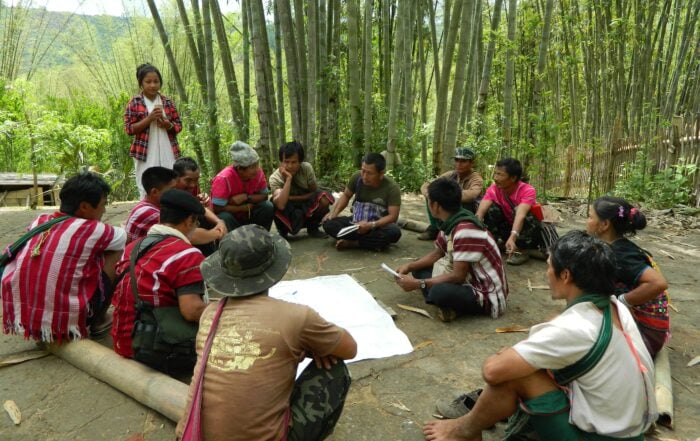As you enter the IPCA Knowledge Basket we invite you to listen to greetings shared by Indigenous language speakers. Click to hear a greeting from the speakers below.
These audio messages were gifted to the IPCA Knowledge Basket . Please do not copy or use the recordings for other purposes without explicit consent.
If you are Indigenous and speak your language, we hope that you will contribute a greeting or thank you message. We hope to reflect the diversity of Indigenous languages spoken on what is now known as Canada.
Listen to Anishinaabe Elder Marilyn Capreol, a member of Shawanaga First Nation, describe the significance of the big dipper constellation design.
Listen to Natowaawawahkaki – Holy Walking Woman (Paulette Fox) describe the design of the IPCA Knowledge Basket and the significance of the big dipper from a Blackfoot perspective.
See What’s New
Below is a growing collection of stories about Indigenous-led conservation, including stories from Indigenous Protected and Conserved Areas (IPCAs).
These stories feature Indigenous voices speaking about Indigenous-led conservation initiatives in their territories. Sometimes, the stories are curated or documented by organizations that Indigenous governments have partnered with.
The stories inform, inspire and celebrate.
Abajignmuen
This website is dedicated to highlighting the work of students, faculty, and staff […]
Fort Folly First Nation: An IPCA Summer
This short documentary tells the story of Amlamgog (Fort Folly) First Nation’s Indigenous Protected and Conserved Area (IPCA). The story features the voices and perspectives of youth from the community who were hired for IPCA-related monitoring over the summer of 2022.
Salween Peace Park: Indigenous Conservation Governance in Southeast Asia
At 5,485 square kilometers, Salween Peace Park is one of the largest and most complex Indigenous protected areas in the world. Nestled between the Thai and Burmese borders, the internationally acclaimed Park emerged through an Indigenous-led vision for peace amidst more than 70 years of conflict.
Nanuk Knowledge and Dialogue Project
This project brings together Inuit leaders and knowledge holders, co-management representatives and interdisciplinary researchers to advance polar bear conservation and Inuit cultural continuity. This work is focused on the Eastern Arctic region of Canada
Ha Nii Tokxw: Our Food Table
The second video of a two part series about the efforts to create Dasiqox Tribal Park. The video documents the spectacular wildlife and environmental values that are found in the tribal park.
Dene Tha’First Nation – Monitoring and Stewardship through a mobile application
The second video of a two part series about the efforts to create Dasiqox Tribal Park. The video documents the spectacular wildlife and environmental values that are found in the tribal park.
Join the Conversation
Stay up to date and watch our feeds for updates, news, and conversations. Links will open in a new tab.






